Resources
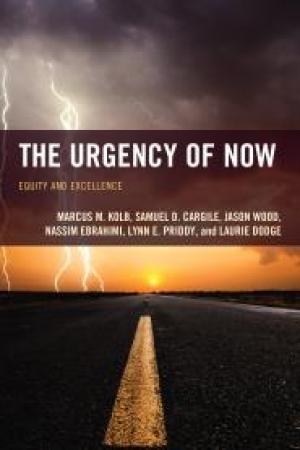
Click Here for Book Review Abstract: With the student body evolving quickly, and the looming challenge of the “completion agenda,” community colleges are facing circumstances like never before in serving all students and propelling them to fulfilling their education aspirations. The Urgency of Now suggests a way forward, with students and their learning at the center of what community colleges, and all of higher education, must do to generate graduates in possession of high quality degrees and credentials. Through considering comprehensive assessment, new roles for accreditation, faculty engagement strategies, and competency-based education, The Urgency of Now describes our current challenges and the ways we might meet those challenges for the 21st century institution. (From the Publisher)
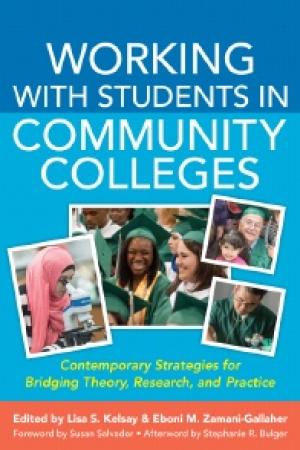
Click Here for Book Review Abstract: This timely volume addresses the urgent need for new strategies and better ways to serve community colleges’ present and future students at a time of rapid diversification, not just racially and ethnically, but including such groups as the undocumented, international students, older adult learners and veterans, all of whom come with varied levels of academic and technical skills. The contributing researchers, higher education faculty, college presidents, and community college administrators provide thorough understanding of student groups who have received scant attention in the higher education literature. They address the often unconscious barriers to access our institutions have erected and describe emerging strategies, frameworks, and pilot projects that can ease students’ transition into college and through the maze of the college experience to completion. They offer advice on organizational culture, on defining institutional outcomes, on aligning shifting demographics with the multiple missions of the community college, on strengthening the collaboration of student and academic affairs to leverage their respective roles and resources, and on engaging with the opportunities afforded by technology. Divided into three parts – understanding today’s community college campuses; supporting today’s community college learners; and specialized populations and communities – this book offers a vision and solutions that should inform the work of faculty, administrators, presidents, and board members. (From the Publisher)
This essay describes a transformation in my experience as an adjunct teaching underprepared students from one of shame toward a desire to assert the value of this work. Insights from my feminist theological training helped me to affirm the importance of encouraging transformative learning in teaching the academically marginalized and prompted my analysis of student writing in an introductory World Religions course, in order to determine whether or not the course was a site of transformative learning. I argue that despite many contextual limitations, the movement toward deepening self-awareness and increasing openness to religious diversity seen in student writing demonstrates that transformative learning began in this course, and that is valuable for students' lives whether or not they are academically successful.
The article is a response to this journal's call for papers on metaphors for teaching, and also draws from a previous publication in which Kent Eilers developed a methodology for teaching global theologies. In this methodology, the ultimate goal was the development of “hermeneutical dispositions of empathy, hospitality, and receptivity toward culturally diverse voices” (2014, 165). This article considers the goals of Eilers' methodology, and others like his, and how it is that the metaphors of “leaving home” and “communal imagination” highlight the importance of the ambient and interpersonal features of a classroom and their effect on the attainment of the above goals. In so doing, it extends the conversation beyond content and methodology in teaching theology and religion into the realms of philosophy of education, as well as the fields of moral and values education. It is contended that the metaphors informed by these areas of study facilitate the attainment of such goals, and similar ones, by demonstrating that the cultivation of an ambience of care, trust, and compassion within the classroom constitutes an essential foundation for learning in which students “leave home” and cultivate “communal imagination.” The article finishes with practical suggestions for educators in theology and religion.
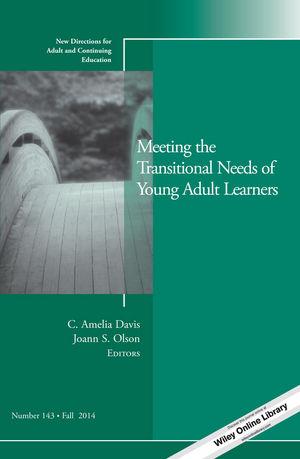
Click Here for Book Review Abstract: This is the first New Directions volume related to young adult learners since 1984. Then, as now, young adults are an important segment of the adult population but have received scant attention in the adult education literature. Increasingly, youths and young adults are enrolling in adult education programs and in doing so are changing the meaning of adulthood. Given the significant demographic, technological, and cultural shifts during the past 30 years, there is an increasing need for practitioners and program planners to reconsider what constitutes “adult” and “adult education.” An understanding of the changing meaning of adulthood is fundamental to developing programs and policies that will address the needs of younger learners, and we believe it is time for an updated discussion among adult educators and scholars in other disciplines. This sourcebook is designed to reignite the discussion related to meeting the educational needs of young adults along with a timely and interdisciplinary discussion that highlights the transitional needs of young adult learners. This is the 143rd volume of the Jossey Bass series New Directions for Adult and Continuing Education. Noted for its depth of coverage, it explores issues of common interest to instructors, administrators, counselors, and policymakers in a broad range of education settings, such as colleges and universities, extension programs, businesses, libraries, and museums. (From the Publisher)
Focused on a biology classroom, but provides a helpful overview of the types of student resistance as well as hypotheses from other disciplines about the potential origins of student resistance. Also includes classroom strategies for preventing or addressing student resistance after it occurs. 
A short essay written by a student in the 1990s who regards herself as introverted, describing the particular qualities and experiences associated with her personal style. Posted on Mark Unno’s website, who teaches Buddhism at the University of Oregon.
A short essay written by a student in the 1990s who regards herself as extrovert, describing the particular qualities and experiences associated with her personal style. Posted on Mark Unno’s website, who teaches Buddhism at the University of Oregon.
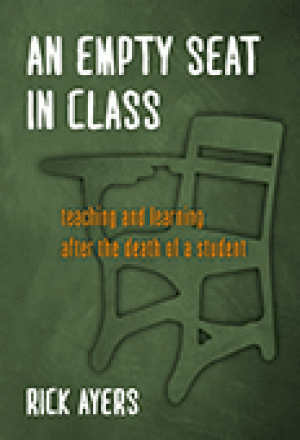
Click Here for Book Review Abstract: The death of a student, especially to gun violence, is a life-changing experience that occurs with more and more frequency in America’s schools. For each of these tragedies, there is a classroom and there is a teacher. Yet student death is often a forbidden subject, removed from teacher education and professional development classes where the curriculum is focused instead on learning about standards, lesson plans, and pedagogy. What can and should teachers do when the unbearable happens? An Empty Seat in Class illuminates the tragedy of student death and suggests ways of dealing and healing within the classroom community. This book weaves the story of the author’s very personal experience of a student’s fatal shooting with short pieces by other educators who have worked through equally terrible events and also includes contributions from counselors, therapists, and school principals. Through accumulated wisdom, educators are given the means and the resources to find their own path to healing their students, their communities, and themselves. (From the Publisher)
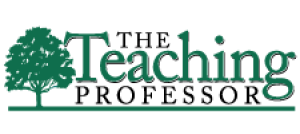
Working with undergraduate students invites teachers into relationship and conversation with young people at a time when they are emerging as adults and forming their identities. Faith is one area of identity formation often attended to by scholars, college professors, and their institutions. But within that, little attention has been paid to those who do not identify as religious. Additionally, “the overwhelming presence of Christianity at American institutions maintains it as the spiritual norm on campus. … Those within the spiritual norm gain a level of privilege that is often unconscious” (Seifert 2007, 11). This has an effect not only on nonreligious students but on any student who identifies as anything other than Christian; and it has a unique effect on teaching and learning in the religion classroom. In this article, I will explain what Christian privilege is, why it is a unique problem in the undergraduate religion classroom, and what teachers of religion might do in response to it. In the end, I argue that educators need to better understand the effects of Christian privilege in our classrooms and become allies to the nonreligious in particular by using pedagogies that include and support all students, in their many religious affiliations and unaffiliations.